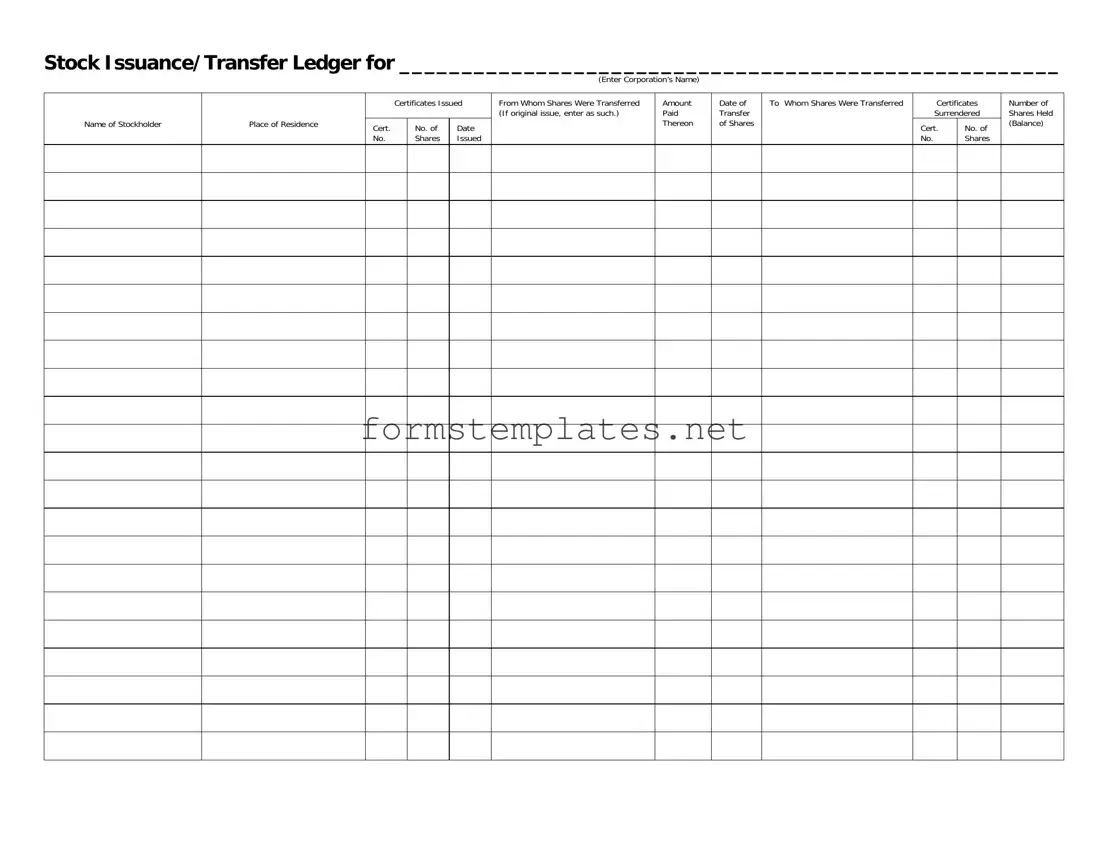The Stock Transfer Ledger form plays a crucial role in maintaining accurate records of stock ownership and transfers within a corporation. This form is essential for tracking the issuance and transfer of shares among stockholders. It requires the corporation's name at the top, ensuring that all entries are linked to the correct entity. Each stockholder's details, including their name and place of residence, must be clearly recorded. The form also includes sections for listing certificates issued, their corresponding numbers, and the date of issuance. When shares are transferred, the form captures vital information such as the name of the person from whom the shares were transferred, the amount paid for the shares, and the date of the transfer. Additionally, it records the recipient of the shares, along with the certificates surrendered during the process. Finally, the form helps maintain an accurate balance of shares held by each stockholder, providing a comprehensive overview of ownership within the corporation. This systematic approach ensures transparency and accountability in stock transactions, which is essential for both the corporation and its shareholders.

